Checking In with Julian Hector and The Gentleman Bug
 June 2nd, 2010 by jules
June 2nd, 2010 by jules
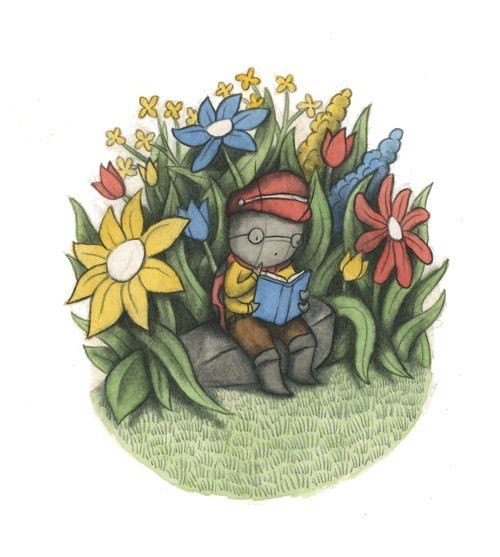
Author/illustrator Julian Hector’s visiting 7-Imp again to share some art work and sketches from his newest title, The Gentleman Bug, which Publishers Weekly has praised for its “quiet humor” and School Library Journal calls an “odd love tale.” It tells the story of the scholarly, bookworm Gentleman Bug, a schoolteacher living in the very Edwardian Garden, whose life scoots along just fine, thanks very much, till Lady Bug arrives in town and he falls head over heels in love. He tries a bit too hard to impress her, in what the publisher (Simon & Schuster) amusingly enough refers to as a failed Victorian makeover. It all works out in the end, but I won’t tell you how, in case you want to read this charmer for yourself (though, caveat: Hector’s words below do include some spoilers). Kirkus writes that Hector “artfully uses subdued colors, elegant lines and generous quantities of space to lend low-key grace to each scene.”
Julian’s here to tell us a bit about the creation of the tale, what’s next for him, and a bit more. And he shares lots of art and sketches. I thank him for stopping by…
CREATION:
I came up with The Gentleman Bug in the fall of 2004, while daydreaming in a Feminist Artist class at Parsons — with slides of Jenny Savilleʼs obese female nudes on the projector screen. I had no idea what the story was going to be about, but I thought that “The Gentleman Bug” could make for a nice book title, and I liked the idea of a male ladybug wearing a top hat. I usually start my stories this way: Iʼll come up with a character, realize that Iʼm drawing it over and over again, then decide that itʼs time to give the character a voice, place it in a conflicting situation, and share it with people.
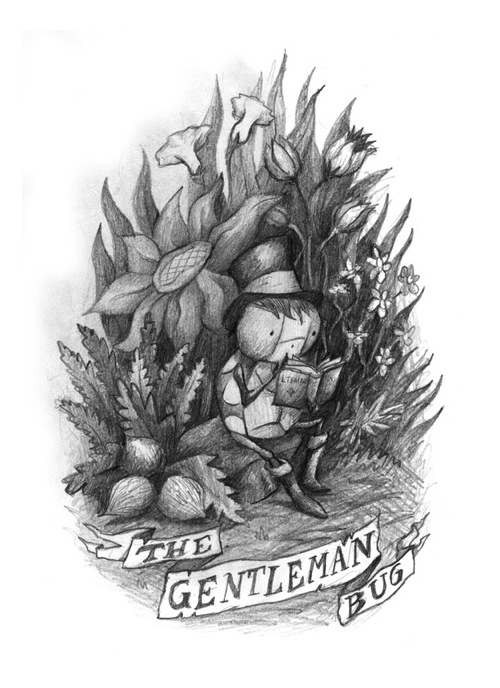
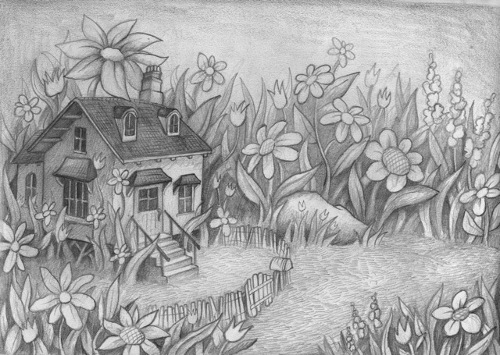
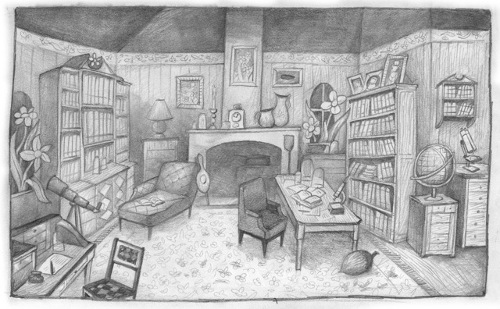
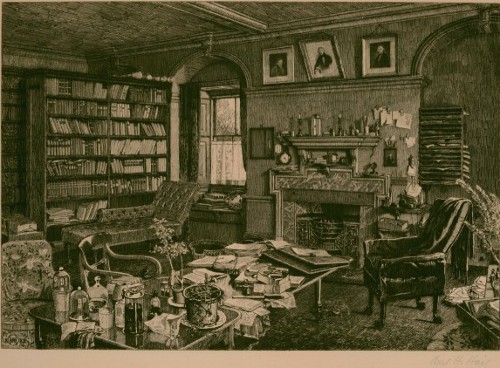
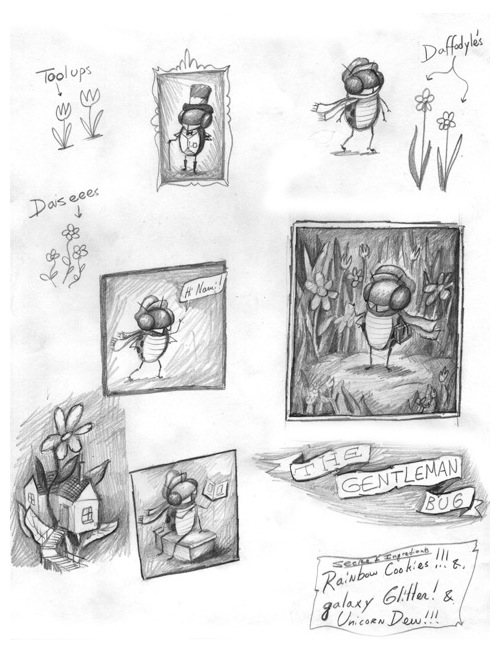
…It took me forever to come up with a story. I had some vague images in mind, and it was hard to write a story that would connect ALL of them. For instance, I knew that I wanted a make-over scene; I didnʼt want the Gentleman Bug to appear well-dressed all the time; I wanted to feature some younger bugs; I wanted a carriage scene with the insect equivalent of horses; a party scene; a train and train station; and I figured that a gentleman bug couldnʼt work without a ladybug, so a love story felt appropriate.
After about four years, I was still without a story. I didnʼt have any new projects to work on, but my editor liked the Gentleman Bug character, so the pressure was on to finally write something. To keep myself motivated and thinking about the book, I started drawing lots of characters and settings. I wanted to create a large cast of bugs from which I could pull and place in different situations – this bug is rich; that bug loves a centipede, but his family will never approve; this bugʼs wife just laid five thousand eggs, and he hasnʼt told her that he was fired from his job; that bug is eaten by a sparrow before he can amend his will and provide for his lover and bastard larvae…that sort of thing, all in the hopes that something would stick and inspire a story. I really enjoyed this period and produced sketchbooks full of characters with which I wanted to populate an eventual book. Finally, I drew a picture of the Gentleman Bug reading and, after a brainstorming lunch with my editor, Namrata Tripathi, she suggested that I build the story around that image and have what the Gentleman Bug likes to do (reading) be the source of the bookʼs conflict.
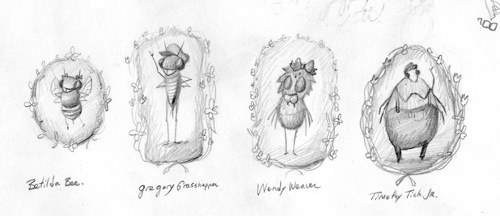
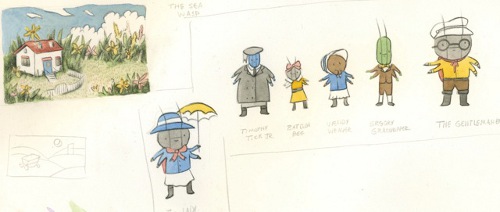
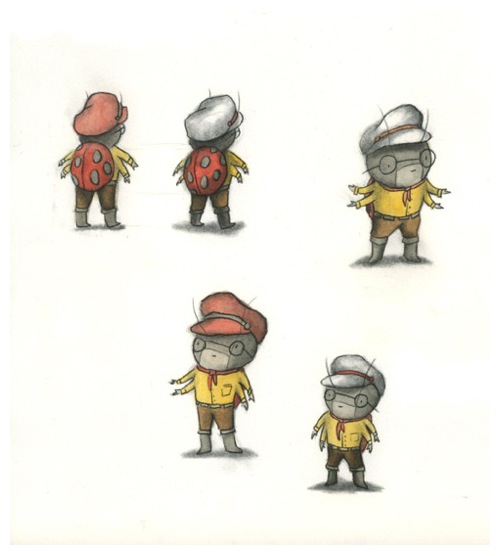
I had drawn some ʻcoolʼ bugs with nineteenth century counterparts (The Sea Wasp, Lord Nelson; Beau B, bug, Beau Brummel; Meyer De Mothschild, Meyer de Rothschild; Boss Beetle, Boss Tweed), and liked that they could be the Gentleman Bugʼs antagonists. I also liked the idea that the book could be a fight between the two definitions of “gentleman”; whereas the Gentleman Bug is “nice,” the cool bugs represent the “high social status” side of the world and, of course, to get the girl the Gentleman Bug thinks that he has to switch sides to impress her. I wanted the Gentleman Bug to like books but felt that it needed to go deeper than that, so I made him a teacher. The final piece to the story was the ladybug. I wanted her to have an interesting reason for arriving in the Garden, and it needed to tie into the Gentleman Bugʼs favorite thing, books. Thus, I made her a librarian with a soon-to-be-opened library.
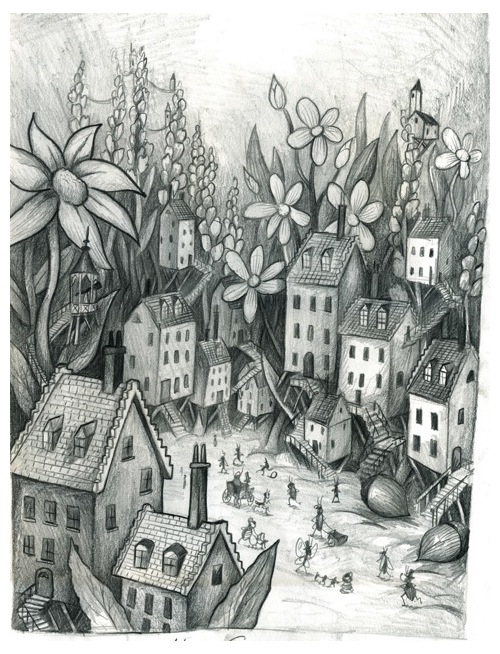
horizontal scenes with something so vertical.”
MEDIUM:
The final paintings were completed at actual size with water colors and charcoal on Arches hot-pressed watercolor paper.
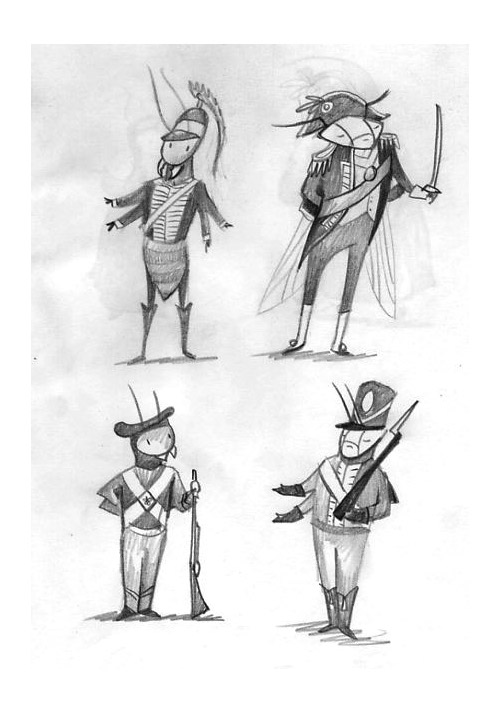
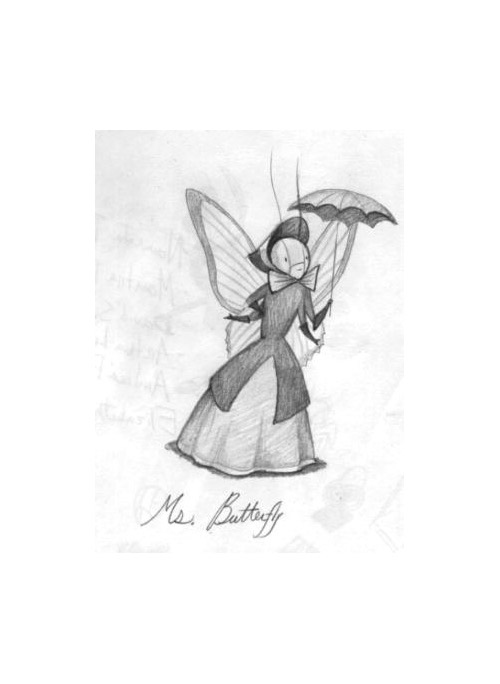
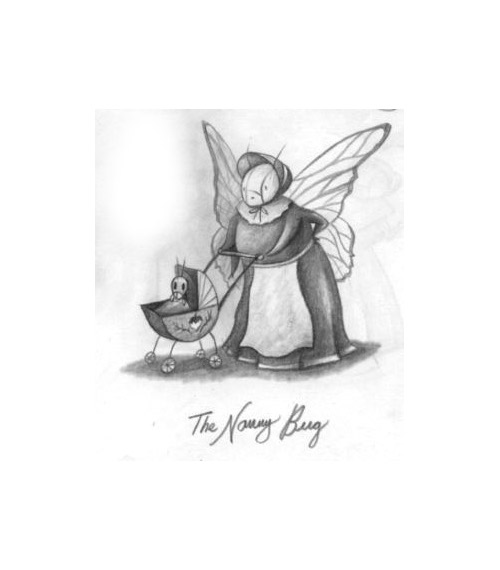
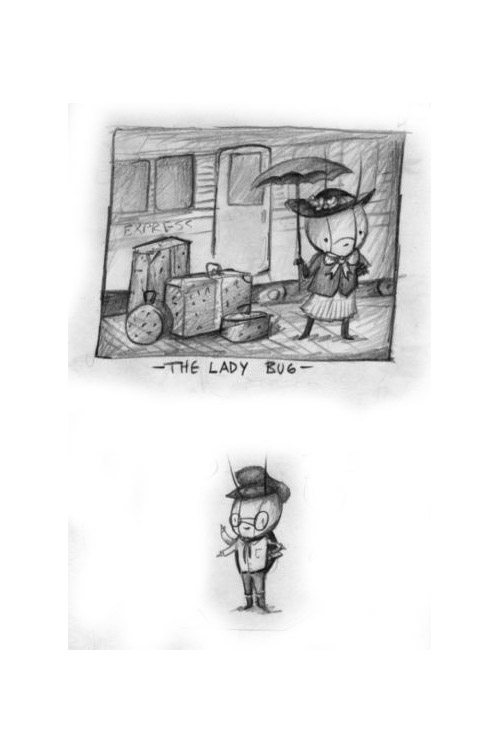
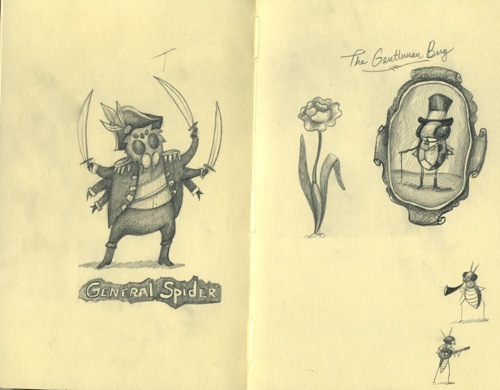
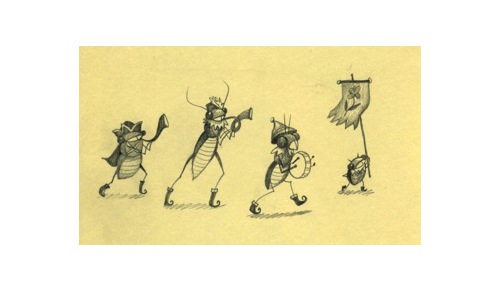
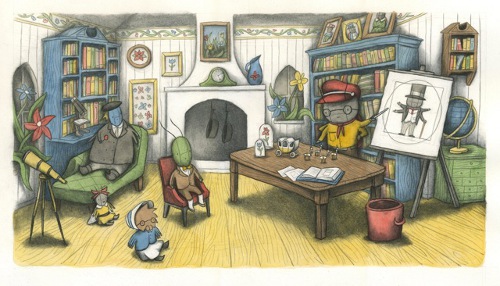
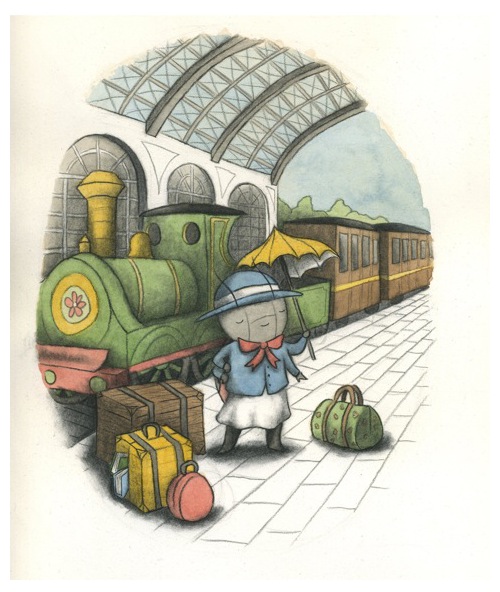
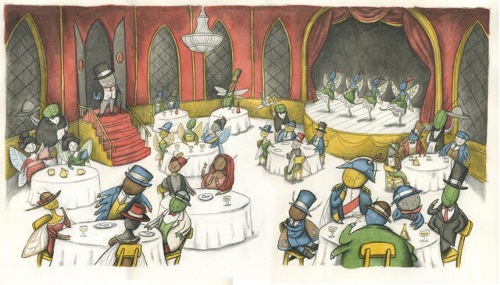
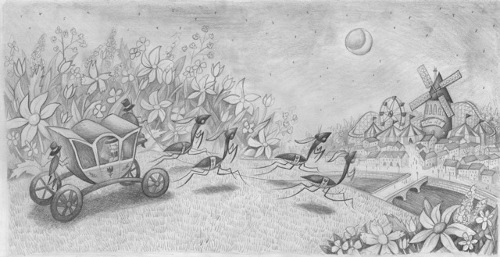
WHATʼS NEXT:
I just finished illustrating a book written by Arthur A. Levine, titled Monday Is One Day, for Scholastic. Itʼs a slice of life story that features six families, and I had an amazing time working on it. Currently, Iʼm Illustrating a collection of fairy tales to be told in Spanish and English for HarperCollins, and Iʼm about to start working on a book that I wrote, titled Vulcan, for Simon and Schuster. In the story, the Olympians grow bored watching competitions on earth, so they decide to hold a talent show “and compete amongst themselves.” The problem is that Vulcan doesnʼt know what his talent is, and his mother, Juno, is forced to help him the only way that she knows how — by throwing a huge fit, breaking stuff, and making everyone cry.
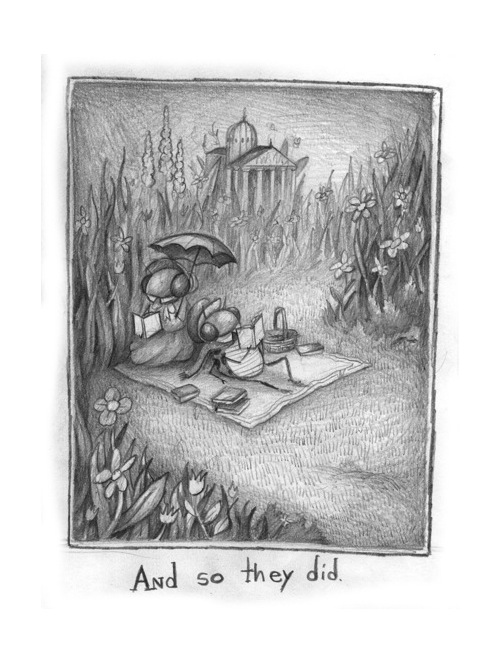
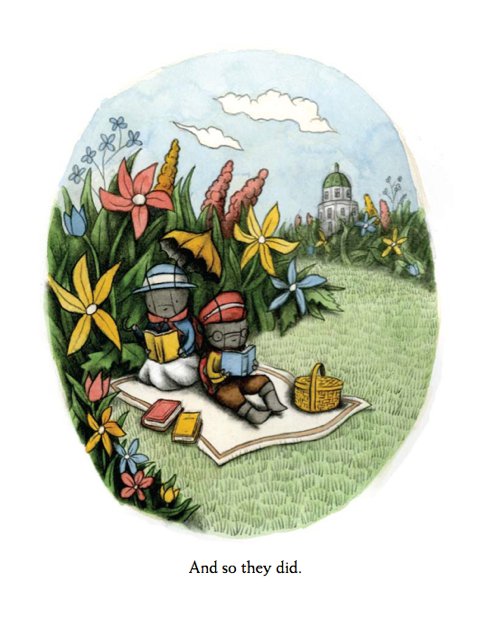
THE GENTLEMAN BUG. Copyright © 2010 by Julian Hector. Published by Simon & Schuster. Images reproduced by permission of the illustrator.

Simply lovely. Thank you for your description of the gestation of the character and the story. It’s very encouraging!
I absolutely LOVE julian hector’s work! I have ALL 3 of his, and I think he is bringing such freshness to the children’s book scene. I am actually illustrating a book for the same author as his Firefighter book , so that was a fun connection to make. I can’t wait to see the books that are coming out!
We own all of Julian’s books and they make wonderful gifts. We look forward to his next and next and next book(s). They are a delight!
LOVE the art in this book.
Love love Julian’s art. I’m a sucker for Edwardian settings, and I want to live in the Bug’s study. Is that a polka dot satchel on the train platform? And is that a ballroom? *admiring*
When I was finding a ladybug, I found this page. It so lovely art a lot. tks:)
I hadn’t seen this book before and love it what’s here. What wonderful many-limbed , droll characters. What a beautiful and fully realized imaginary world. I am buying this one. Thanks, Julian and Jules